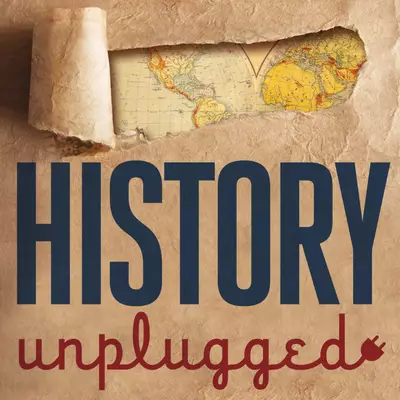Listen on Your Favorite App
The Civil War in the American West: When Multi-Racial Armies Fought Over Gold Mines and Indian Lands
March 19, 2020
00:00
01:04:21
Listen on Your Favorite App
When people think of the American Civil War, specific images spring to mind—Lincoln’s Gettysburg Address, Scarlett O’Hara escaping a burning Atlanta in a hoop skirt, and blue and grey uniforms clashing on bloodied battlefields. The war is well researched, but there is still the little-known, yet still vastly important, history of the Civil War in the American West.
I’m talking today with Megan Kate Nelson, author of The Three Cornered-War: The Union, the Confederacy, and Native Peoples in the Fight for the West. Both the Union and Confederacy had their eyes on the prize that was the American West; making up more than 40 percent of the United States landmass, the territory would give whoever controlled it access to gold and Pacific ports. For the North, it was also imperative to protect its interests in New Mexico in particular, since that territory was not only the gateway to Southern California, but it also shared a border with the Confederacy, making it vulnerable to invasion by pro-slavery forces. As Nelson explains, the battles that took place in the region “illuminate the ways that the Southwest became a pivotal theater of the Civil War and the center of a larger struggle for the future of the nation, of Native peoples, and of the West.”
The Western Theatre saw the complex interplay between the Civil War, the Indian wars, and western expansion, reframing this struggle as a truly national conflict. Today’s political conflicts over immigration have created chaos along the Southwest’s border with Mexico. This region has long been a site of contention, however—a place in which struggles for power have sparked armed conflict and determined federal policies regarding who, exactly, is an American.
I’m talking today with Megan Kate Nelson, author of The Three Cornered-War: The Union, the Confederacy, and Native Peoples in the Fight for the West. Both the Union and Confederacy had their eyes on the prize that was the American West; making up more than 40 percent of the United States landmass, the territory would give whoever controlled it access to gold and Pacific ports. For the North, it was also imperative to protect its interests in New Mexico in particular, since that territory was not only the gateway to Southern California, but it also shared a border with the Confederacy, making it vulnerable to invasion by pro-slavery forces. As Nelson explains, the battles that took place in the region “illuminate the ways that the Southwest became a pivotal theater of the Civil War and the center of a larger struggle for the future of the nation, of Native peoples, and of the West.”
The Western Theatre saw the complex interplay between the Civil War, the Indian wars, and western expansion, reframing this struggle as a truly national conflict. Today’s political conflicts over immigration have created chaos along the Southwest’s border with Mexico. This region has long been a site of contention, however—a place in which struggles for power have sparked armed conflict and determined federal policies regarding who, exactly, is an American.
See omnystudio.com/listener for privacy information.
More Episodes
See all episodes
Meet Your Host

Scott Rank is the host of the History Unplugged Podcast and a PhD in history who specialized in the Ottoman Empire and modern Turkey. Before going down the academic route he worked as a journalist in Istanbul. He has written 12 history books on topics ranging from lost Bronze Age civilizations to the Age of Discovery. Some of his books include The Age of Illumination: Science, Technology, and Reason in the Middle Ages and History’s 9 Most Insane Rulers.. Learn more about him by going to scottrankphd.com.
